ROPA Method
What is the ROPA method?
The ROPA method is a method of assisted reproduction in which same sex female couples can opt for shared motherhood. The acronym ROPA stands for ‘Receiving oocytes from the partner’.
Shared motherhood allows both partners the opportunity to be physically involved in the pregnancy, even before birth. Both mothers must undergo all the mandatory tests prior to an in-vitro fertilization treatment that ensures their perfect health and that does not contraindicate either the technique or the subsequent pregnancy.
It is usually advised that the woman with the best ovarian reserve and therefore the youngest of the couple be the genetic mother (contribute her eggs) and thus ensuring the best options of obtaining embryos with good implantation potential, which can then be transferred to the future birth mother.
Would you like to know about other treatments available for female couples?
ROPA method gestation rate
This rate depends fundamentally on the age of the woman who provides the eggs and on concurrent situations that have determined the indication for the treatment.
Depending on the age of the woman, this rate may also vary.
Women under 38 years of age
%
Gestation rate per cycle
%
Clinical gestation (with a heartbeat present)
(average age of 41)
%
Gestation rate per cycle
%
Clinical gestation (detection of a heartbeat)
%
Gestation rate per cycle
%
Clinical gestation (with a heartbeat present)
%
Gestation rate per cycle
%
Clinical gestation (detection of a heartbeat)
Age is a determining factor in assisted reproduction treatment. If you are using your own eggs and you are under 38 years old our success rate is 57% in the first cycle. If you are over 38 years old our success rate is 21% in the first cycle. It is important to note that the chances of getting pregnant are cumulative, that is, they increase with each attempt (the maximum number of attempts that we recommend in our fertility clinic is 3).
By clinical pregnancy * it is understood as the detection of a foetal heartbeat on an ultrasound scan.
Técnica
The technique applied in the ROPA Method involves the following steps:
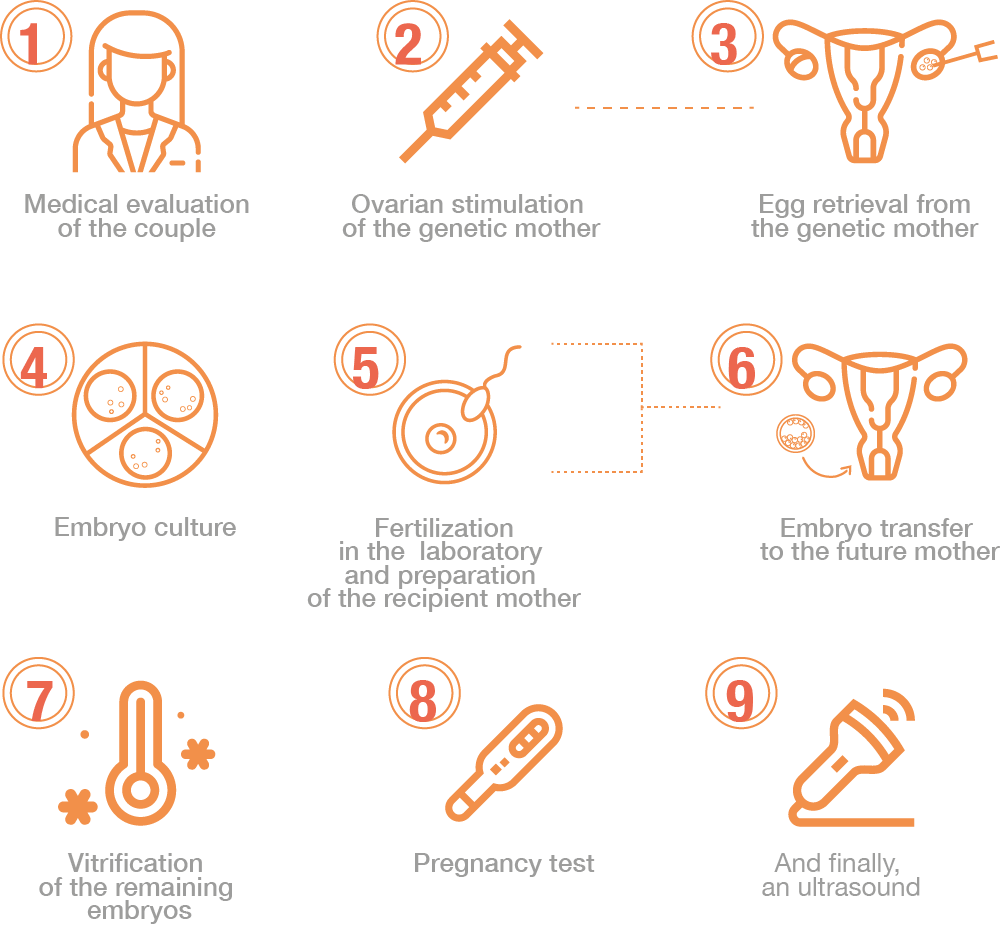
- Medical evaluation of the couple
- Ovarian stimulation
- Egg retrieval (Ovarium puncture)
- Fertilisation in the laboratory
- Embryo culture
- Preparation of the recipient mother
- Embryo transfer
- Vitrification of the unused embryos
- Pregnancy test
- The ultrasound

During the first consultation we do an evaluation of both women and we begin with doing some mandatory tests.
We usually recommend that the youngest woman be the one who undergoes the stimulation treatment and contributes her eggs, we call her the genetic mother. A women’s age is a determining factor in these situations, as we get older we have fewer and poorer quality eggs. This is why the youngest woman should be the one who contributes the eggs so that they have better implantation potential.
In parallel, the future birth mother will undergo an oestrogen treatment to prepare her endometrium, ensuring that it is in the best conditions to receive the embryo.
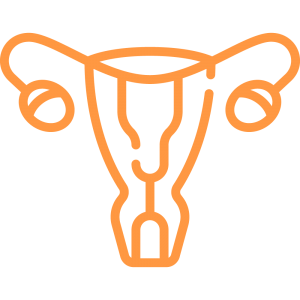
Normally, a single egg is produced during a woman’s natural cycle. Ovarian stimulation consists of administering hormones by subcutaneous injection to obtain more eggs. The entire process is monitored by a series of ultrasound scans, for which our specialists are available seven days a week to do. Depending on the type of protocol used and the rapid response of the ovary, the duration of the process will vary between 10 and 12 days.
Once the follicles reach the appropriate size and number, a hormone called HCG is administered to complete the maturation of the eggs. Approximately 36 hours after administering the HCG, the mature eggs can be aspirated from the ovary.

This procedure consists of the aspiration of the mature oocytes using ultrasound guidance and administrating a gentle sedation to the patient so that she does not feel any type of discomfort. This minor procedure usually takes about 15 minutes.
On the day of this procedure it is recommended not to carry out activities that require a lot of effort, or to be fully alert, such as driving, even though you may feel perfectly well, it is advisable to just relax and take it easy.

Once the eggs have been obtained, they are inseminated with the semen from an anonymous donor which has been previously prepared in the laboratory.
Here at Clínica Fertia we work with the main semen banks in our country, this allows us to select the donor sample that best fits the physical characteristics (race, eye colour, hair, height, weight and blood group) of the couple. And it also offers the option of genetic matching between the semen donor and the genetic mother.
Fertilisation can be carried out by classical IVF, for this the biologist puts each oocyte in contact with some 25 to 50,000 previously selected sperm, and lets fertilization occur unaided or by ICSI, which consists of introducing a single sperm into the cytoplasm of the ovule by puncturing it with a fine pipette.
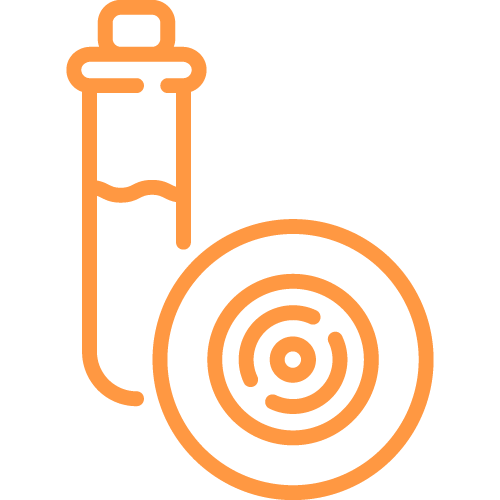
The embryos are cultured and monitored in the laboratory for several days (from 2 to 6). For this, we use modern incubation techniques to monitor its evolution in real time (morphokinetics). We have incubators equipped with time lapse technology, which incorporates an image capture system, which allows us to observe the embryos development from their fertilization until the moment of transfer to the uterus, without having to remove them from the incubator. In this way, the culture conditions are more stable, which means an improvement in embryo quality. In addition, this technology facilitates the selection of the best embryos to transfer and freeze.

This is usually carried out in parallel to the cycle of stimulation of the genetic mother.
In the first place, we make sure to achieve the cessation of ovarian activity in the recipient, for which we normally use contraceptives or a single dose of GNRH analogues, except in women who are already in the menopause stage in which case, this is not necessary.
Next, an oestrogen substitution regimen is started, either orally or through transdermal patches, to ensure adequate preparation of the endometrium, where the embryos will be deposited. During this process, one or two ultrasounds will be performed to verify that the endometrium has reached the desired size. This phase usually lasts about two weeks.
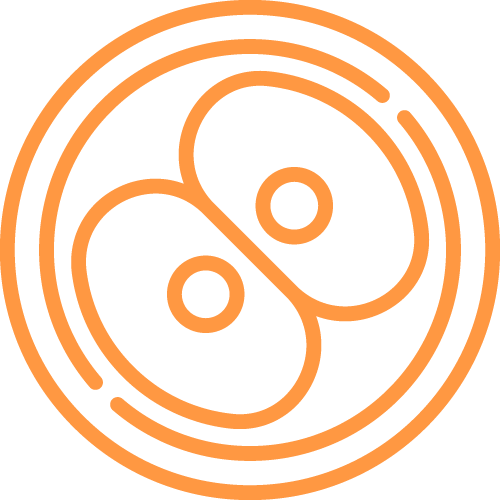
This consists of the introduction of the embryos inside the uterine cavity. To do this, a speculum is placed in the vagina and a fine cannula is inserted that carries the embryos which are deposited in the uterus under ultrasound guidance. This process is quick and painless.
After the transfer we recommend relative bed rest during the rest of the day and the following day, after which the woman can return to her usual activities.
Our only recommendation is to avoid vigorous physical activities and sports during the two weeks after the transfer. Travelling and driving are not seen as a problem.
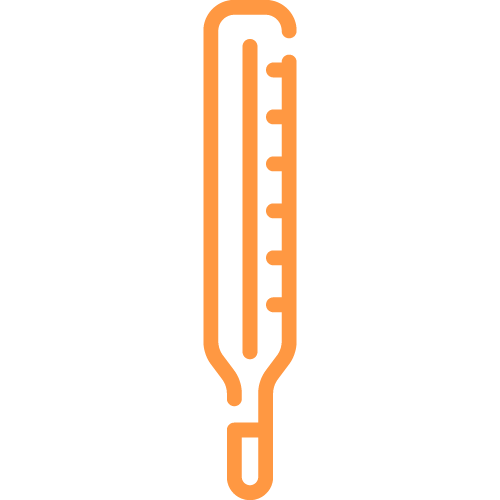
Once the transfer has been carried out, the rest of the good quality embryos are preserved in liquid nitrogen in order to be used in subsequent cycles without the need to carry out the entire process again.
Currently, in the Fertia clinic laboratory we use the Vitrification or ultra-fast freezing technique.
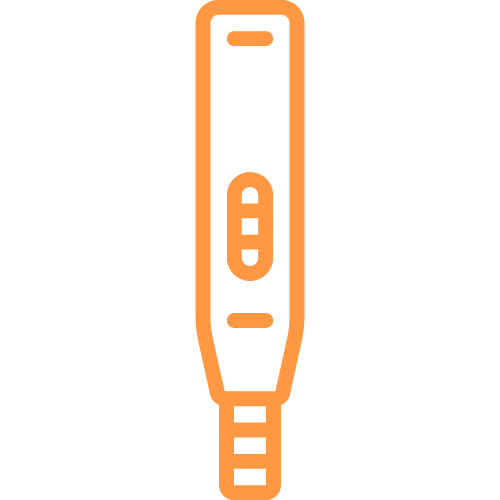
12 days after the embryo transfer, a BHCG (pregnancy) test will be done on the future birth mother to confirm the pregnancy.
Alternatively a urine test can also be done 14 days after the embryo transfer.
Until the pregnancy is confirmed, the medication prescribed on the day of the embryo transfer must be continued.

15 days after performing the BHCG analysis, an ultrasound is performed to confirm the number of embryos that have implanted and the gestational sac with the embryo inside can be visualized with the presence of a foetal heartbeat. On occasions the heartbeat can be visualized 7 days after the analysis.
Would you like to know about other treatments available for female couples?
Female couples at Clinica Fertia
If you would like more information about our treatments, we are always available to help and answer any of your questions.
Female couples at Clinica Fertia
Article 6 of Law 14/2006 on Assisted Reproduction establishes “Any woman over 18 years of age and with full capacity to act, may be a recipient or user of the techniques regulated by this law, provided that she has given her consent in writing to their use. freely, consciously and expressly. The woman may be a user or recipient of the regulated techniques or a recipient of the techniques regulated in this Law regardless of her marital status and sexual orientation ”.
The aforementioned law is respectful and open to the sexual condition of each person.
Here at Clínica Fertia we have seen how year after year the increasing number of same sex female couples place their trust in us to make their dream of forming a family a reality.
In these cases, the most appropriate technique will be determined by the age of the woman and her specific clinical situation and the treatments can vary from artificial insemination with a donor, IVF, donation of both male and female gametes, or embryo adoption.
How long do I have to wait to start treatment?
How many attempts can I make?
Regarding In-vitro fertilization or microinjection, our clinic never makes more than four attempts using these techniques.
In the case of egg donation, it is more difficult to establish a limit, this will normally be determined by psychological and also economic factors.
Can you use these techniques when you have already entered menopause?
In these cases, the reception of eggs from a donor must be used.
What are the biggest concerns of egg or sperm recipient couples?
Another factor that concerns a couple is the health of the donors and the physical resemblance to them.
In our centre, both in the case of sperm donors and egg donors, our goal is to seek that the physical resemblance is as similar as possible to the parents.
Are these treatments expensive?
Clínica Fertia is a pioneer in maintaining an honest and transparent policy. Since 2002 we have published the information of the cost of our treatments on our website.
